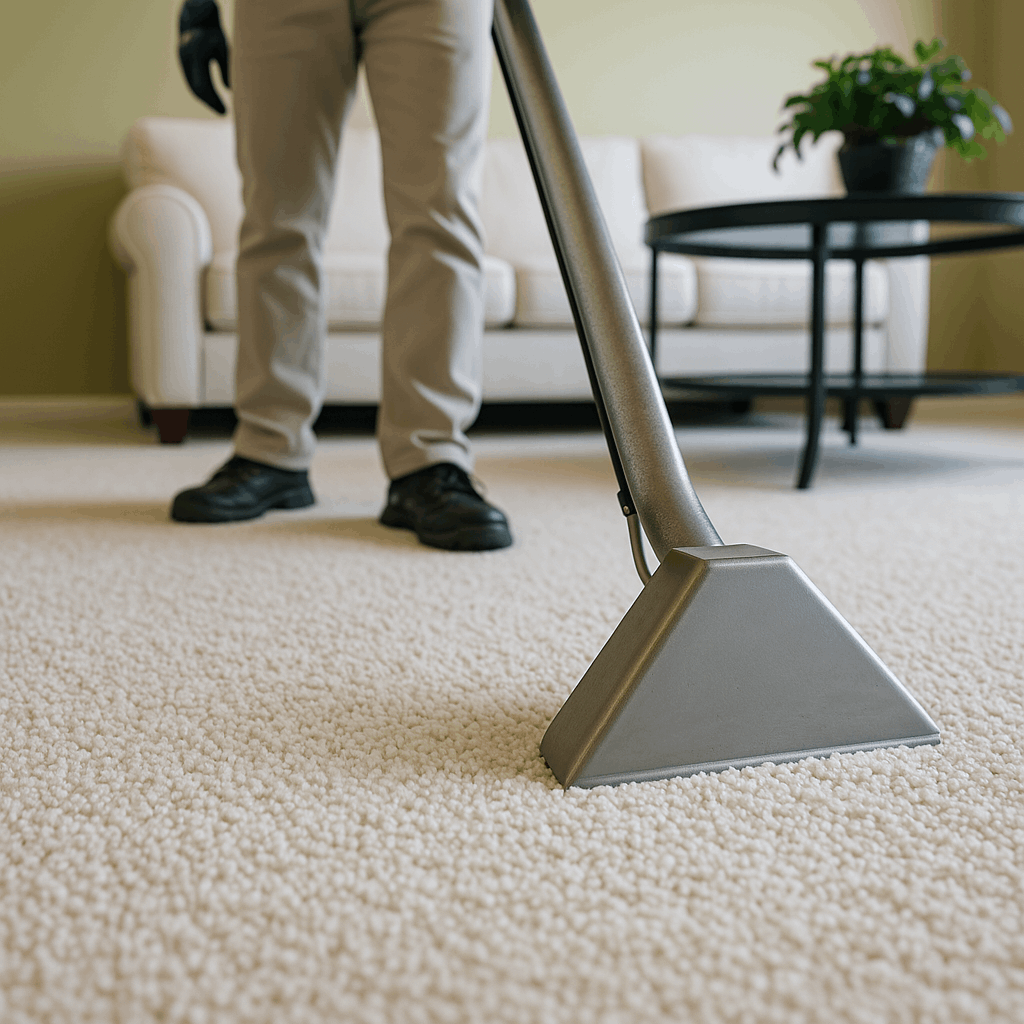CARPET CARE YOU CAN'T BEAT
In days gone by, carpets and rugs were cleaned by taking them outside, hanging them across a line, and beating them. Perhaps you remember this tedious Saturday afternoon chore from your childhood. Our mothers and grandmothers may not have understood the cleaning technology behind this work, but they did realize the beneficial results.
The majority of soil in carpet is dry, insoluble, particulate matter. An analysis by Proctor and Gamble Laboratories of carpet soiling samples representing a cross-section from throughout the United States reveals the following data on soil in carpet:
* Tracked-in, gritty particles make up approximately 55%.
* Animal fiber from people, pets and fabrics comprise about 12%.
* Another 12% is vegetable matter and fiber from fabrics, indoor plants, lawn trackings and paper products.
These combine to account for 79% of the soil nestled in carpet fibers. This soil composition varies with geographic location and use of the facility. This dry soil is often abrasive and can harm carpet fibers if not removed. Under the weight and movement of foot traffic, these particulate soils can scratch and cut carpet fibers, dulling the appearance of the carpet. Abrasive soil is the major cause of carpet wear.
Today most carpet is installed wall to wall, and clotheslines are becoming a thing of the past. We can't beat this particulate soil out of our soft floor coverings, but we can vacuum it out. Frequent, thorough vacuuming is the most important step in a carpet maintenance program. Routine vacuuming enhances the appearance and prolongs the use full life of carpet by lifting the fibers and removing harm full particulate soil. Proper vacuuming also helps create a healthier indoor environment by removing pollutants such as dust mites and their feces, discarded human skin cells that mites feed upon, mold spores and other biological contaminants collected in the carpet.
The equipment is the first consideration for effective vacuuming. The Institute of Inspection Cleaning and Restoration Certification (IICRC), Vancouver, Washington, the certifying body for professionals achieving levels of proficiency in the cleaning, restoration, and inspection industry, offers these tips on selecting a vacuum cleaner:
* Upright vacuum cleaners are generally more efficient than canister models.
* A top-load vacuum works more efficiently than a bottom-load.
* The vacuum cleaner head should be equipped with a beater bar or revolving brush. This mechanical action separates the carpet fibers and lifts the soil for vacuum removal. This duplicates the agitation of beating the rug on the clothesline.
* A dual-motor vacuum, utilizing one motor to operate the beater bar and one for the vacuum, is most efficient.
* The cleaning objective is to remove as many particles and biopollutants as possible, not to redistribute them into the air to settle back into the carpet and fumishings or be absorbed into the respiratory system. Vacuum cleaners equipped with high efficiency particulate air (HEPA) filtration systems trap tiny particles.
* Disposable paper bags are recommended over cloth bags. Cloth bags can become clogged with soil, reducing air flow through the bag.
* Replace the beater bar and brushes as they become worn.
* Have blower fan blades replaced as they abrade.
* Replace worn or cracked belts.
Vacuuming is such a common place chore that little thought is given to how it should be done. The IICRC provides these recommendations:
* With vacuuming, more is better. You cannot over vacuum a carpet. Today's carpets are designed to hide soil, so soil is not always visible. Studies conducted by Hoover Vacuum Cleaning Company show that one square foot of carpet can hold up to one pound of dirt and still appear clean. Thorough vacuuming to remove the pile-damaging soil hidden deep in the carpet takes time. Don't just groom the surface by removing large, noticeable debris.
* Adjust the brush or beater bar properly for each carpet height. The brush or bar should touch the carpet.
* Empty or replace the bag often. When a bag is half full, vacuum efficiency is reduced by 60 to 80%.
* Overall vacuuming is needed, but knowing where to concentrate your efforts is more productive. The majority of soil in carpet is brought from outside by foot traffic, so normally the highest concentration of soil is in entrances and high traffic areas.
* Hand vacuum the dust and fine particulate soil that builds up around the edges and in the corners of the rooms.
Successful vacuuming requires time, proper technique, and effective equipment. However, even the most meticulous worker with the best vacuum cleaner cannot remove all the soil in carpet. A small percentage of the soil is oil-based. This oily residue bonds the particulate soil left from vacuuming to the carpet fibers and causes the appearance of dirty traffic patterns. Vacuuming is ineffective against this oily buildup. Removal requires the periodic service of a certified professional carpet cleaner.
This article has been provided by your local IICRC certified carpet professional.

